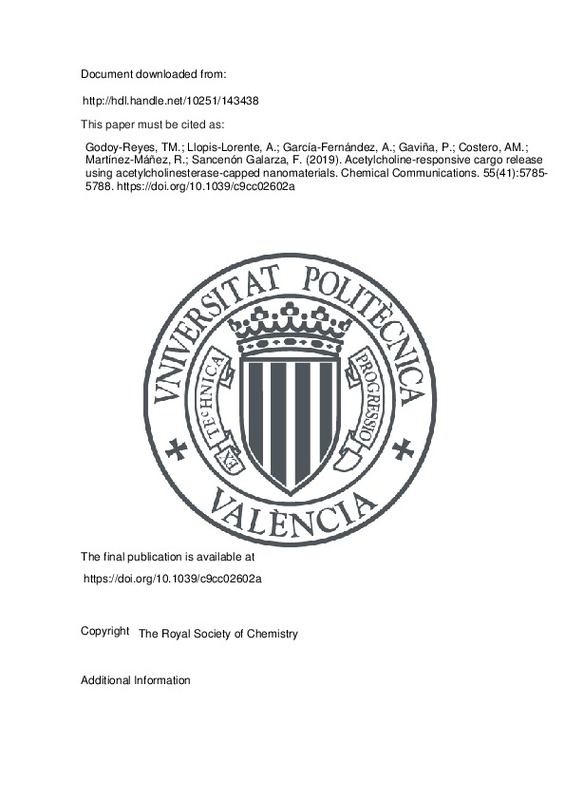McCorry, L. K. (2007). Physiology of the Autonomic Nervous System. American Journal of Pharmaceutical Education, 71(4), 78. doi:10.5688/aj710478
W. M. Haschek , C. G.Rousseaux and M. A.Wallig , Nervous System , in Fundamentals of Toxicologic Pathology , 2nd edn, Academic Press CY , San Diego , 2010 , p. 377
Klinkenberg, I., Sambeth, A., & Blokland, A. (2011). Acetylcholine and attention. Behavioural Brain Research, 221(2), 430-442. doi:10.1016/j.bbr.2010.11.033
[+]
McCorry, L. K. (2007). Physiology of the Autonomic Nervous System. American Journal of Pharmaceutical Education, 71(4), 78. doi:10.5688/aj710478
W. M. Haschek , C. G.Rousseaux and M. A.Wallig , Nervous System , in Fundamentals of Toxicologic Pathology , 2nd edn, Academic Press CY , San Diego , 2010 , p. 377
Klinkenberg, I., Sambeth, A., & Blokland, A. (2011). Acetylcholine and attention. Behavioural Brain Research, 221(2), 430-442. doi:10.1016/j.bbr.2010.11.033
Hasselmo, M. E. (2006). The role of acetylcholine in learning and memory. Current Opinion in Neurobiology, 16(6), 710-715. doi:10.1016/j.conb.2006.09.002
An, M. C., Lin, W., Yang, J., Dominguez, B., Padgett, D., Sugiura, Y., … Lee, K.-F. (2010). Acetylcholine negatively regulates development of the neuromuscular junction through distinct cellular mechanisms. Proceedings of the National Academy of Sciences, 107(23), 10702-10707. doi:10.1073/pnas.1004956107
Ehrenstein, G., Galdzicki, Z., & Lange, G. D. (1997). The choline-leakage hypothesis for the loss of acetylcholine in Alzheimer’s disease. Biophysical Journal, 73(3), 1276-1280. doi:10.1016/s0006-3495(97)78160-8
Fambrough, D. M., Drachman, D. B., & Satyamurti, S. (1973). Neuromuscular Junction in Myasthenia Gravis: Decreased Acetylcholine Receptors. Science, 182(4109), 293-295. doi:10.1126/science.182.4109.293
Casey, D. E., Gerlach, J., & Christensson, E. (1980). Dopamine, acetylcholine, and GABA effects in acute dystonia in primates. Psychopharmacology, 70(1), 83-87. doi:10.1007/bf00432375
Bartels, A. L., & Leenders, K. L. (2009). Parkinson’s disease: The syndrome, the pathogenesis and pathophysiology. Cortex, 45(8), 915-921. doi:10.1016/j.cortex.2008.11.010
Aosaki, T., Miura, M., Suzuki, T., Nishimura, K., & Masuda, M. (2010). Acetylcholine-dopamine balance hypothesis in the striatum: An update. Geriatrics & Gerontology International, 10, S148-S157. doi:10.1111/j.1447-0594.2010.00588.x
Mura, S., Nicolas, J., & Couvreur, P. (2013). Stimuli-responsive nanocarriers for drug delivery. Nature Materials, 12(11), 991-1003. doi:10.1038/nmat3776
Pattni, B. S., Chupin, V. V., & Torchilin, V. P. (2015). New Developments in Liposomal Drug Delivery. Chemical Reviews, 115(19), 10938-10966. doi:10.1021/acs.chemrev.5b00046
Ulbrich, K., Holá, K., Šubr, V., Bakandritsos, A., Tuček, J., & Zbořil, R. (2016). Targeted Drug Delivery with Polymers and Magnetic Nanoparticles: Covalent and Noncovalent Approaches, Release Control, and Clinical Studies. Chemical Reviews, 116(9), 5338-5431. doi:10.1021/acs.chemrev.5b00589
Tang, F., Li, L., & Chen, D. (2012). Mesoporous Silica Nanoparticles: Synthesis, Biocompatibility and Drug Delivery. Advanced Materials, 24(12), 1504-1534. doi:10.1002/adma.201104763
Song, N., & Yang, Y.-W. (2015). Molecular and supramolecular switches on mesoporous silica nanoparticles. Chemical Society Reviews, 44(11), 3474-3504. doi:10.1039/c5cs00243e
Aznar, E., Oroval, M., Pascual, L., Murguía, J. R., Martínez-Máñez, R., & Sancenón, F. (2016). Gated Materials for On-Command Release of Guest Molecules. Chemical Reviews, 116(2), 561-718. doi:10.1021/acs.chemrev.5b00456
Sancenón, F., Pascual, L., Oroval, M., Aznar, E., & Martínez-Máñez, R. (2015). Gated Silica Mesoporous Materials in Sensing Applications. ChemistryOpen, 4(4), 418-437. doi:10.1002/open.201500053
Abad, J. M., Vélez, M., Santamaría, C., Guisán, J. M., Matheus, P. R., Vázquez, L., … Fernández, V. M. (2002). Immobilization of Peroxidase Glycoprotein on Gold Electrodes Modified with Mixed Epoxy-Boronic Acid Monolayers. Journal of the American Chemical Society, 124(43), 12845-12853. doi:10.1021/ja026658p
Zhao, Y., Trewyn, B. G., Slowing, I. I., & Lin, V. S.-Y. (2009). Mesoporous Silica Nanoparticle-Based Double Drug Delivery System for Glucose-Responsive Controlled Release of Insulin and Cyclic AMP. Journal of the American Chemical Society, 131(24), 8398-8400. doi:10.1021/ja901831u
Díez, P., Esteban-Fernández de Ávila, B., Ramírez-Herrera, D. E., Villalonga, R., & Wang, J. (2017). Biomedical nanomotors: efficient glucose-mediated insulin release. Nanoscale, 9(38), 14307-14311. doi:10.1039/c7nr05535h
Barrett, E. P., Joyner, L. G., & Halenda, P. P. (1951). The Determination of Pore Volume and Area Distributions in Porous Substances. I. Computations from Nitrogen Isotherms. Journal of the American Chemical Society, 73(1), 373-380. doi:10.1021/ja01145a126
Brunauer, S., Emmett, P. H., & Teller, E. (1938). Adsorption of Gases in Multimolecular Layers. Journal of the American Chemical Society, 60(2), 309-319. doi:10.1021/ja01269a023
Narendranath, N. V., Thomas, K. C., & Ingledew, W. M. (2001). Effects of acetic acid and lactic acid on the growth of Saccharomyces cerevisiae in a minimal medium. Journal of Industrial Microbiology and Biotechnology, 26(3), 171-177. doi:10.1038/sj.jim.7000090
Zhang, N., Zhao, F., Zou, Q., Li, Y., Ma, G., & Yan, X. (2016). Multitriggered Tumor-Responsive Drug Delivery Vehicles Based on Protein and Polypeptide Coassembly for Enhanced Photodynamic Tumor Ablation. Small, 12(43), 5936-5943. doi:10.1002/smll.201602339
Wang, C.-I., Chen, W.-T., & Chang, H.-T. (2012). Enzyme Mimics of Au/Ag Nanoparticles for Fluorescent Detection of Acetylcholine. Analytical Chemistry, 84(22), 9706-9712. doi:10.1021/ac300867s
Schena, A., & Johnsson, K. (2013). Sensing Acetylcholine and Anticholinesterase Compounds. Angewandte Chemie International Edition, 53(5), 1302-1305. doi:10.1002/anie.201307754
Vizi, E., Fekete, A., Karoly, R., & Mike, A. (2010). Non-synaptic receptors and transporters involved in brain functions and targets of drug treatment. British Journal of Pharmacology, 160(4), 785-809. doi:10.1111/j.1476-5381.2009.00624.x
Zhou, Y., Tan, L.-L., Li, Q.-L., Qiu, X.-L., Qi, A.-D., Tao, Y., & Yang, Y.-W. (2014). Acetylcholine-Triggered Cargo Release from Supramolecular Nanovalves Based on Different Macrocyclic Receptors. Chemistry - A European Journal, 20(11), 2998-3004. doi:10.1002/chem.201304864
Scherer, W. F., Syverton, J. T., & Gey, G. O. (1953). STUDIES ON THE PROPAGATION IN VITRO OF POLIOMYELITIS VIRUSES. Journal of Experimental Medicine, 97(5), 695-710. doi:10.1084/jem.97.5.695
Li, S., Zou, Q., Li, Y., Yuan, C., Xing, R., & Yan, X. (2018). Smart Peptide-Based Supramolecular Photodynamic Metallo-Nanodrugs Designed by Multicomponent Coordination Self-Assembly. Journal of the American Chemical Society, 140(34), 10794-10802. doi:10.1021/jacs.8b04912
[-]







![[Cerrado]](/themes/UPV/images/candado.png)


